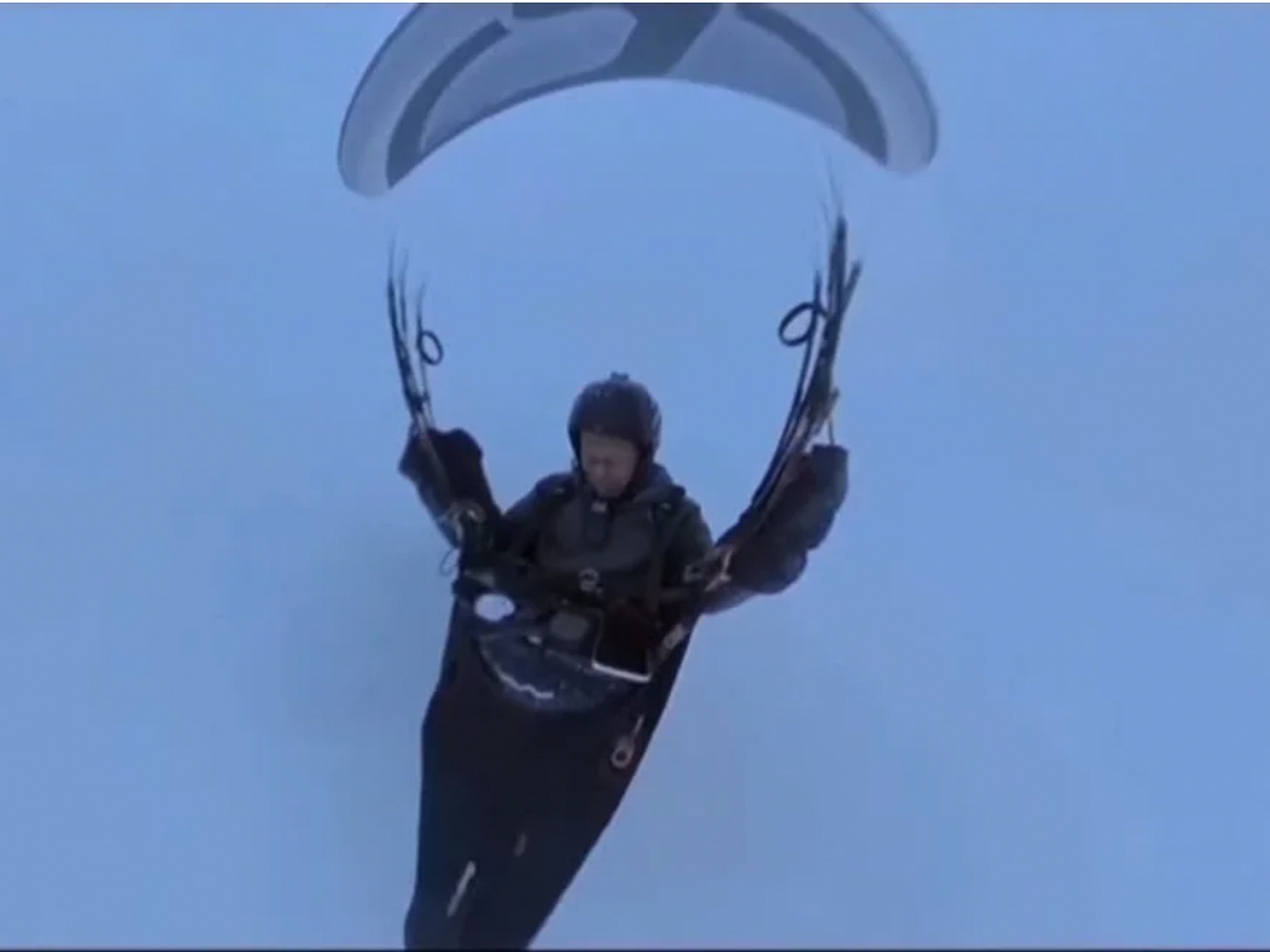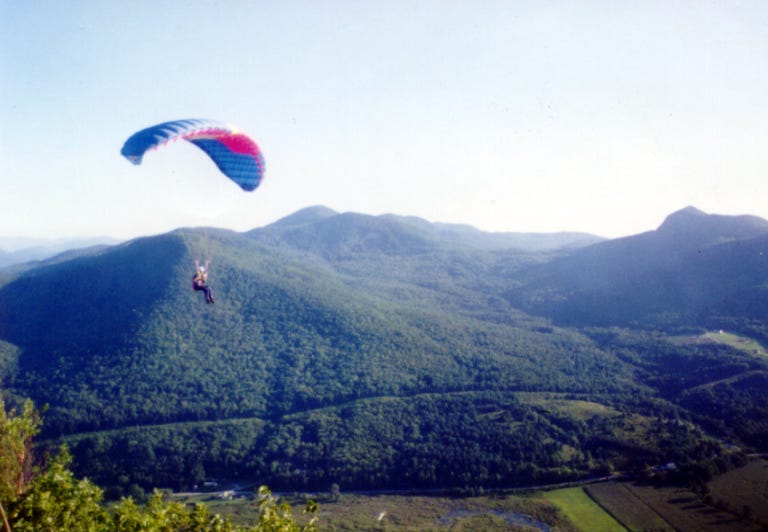Chinese Paraglider Survives Harrowing Ascent to 28,000 Feet. Could that Happen in Vermont?
Compass Vermont speaks to a paragliding instructor to find out.
A Chinese paraglider’s recent brush with disaster, swept to a dizzying 28,208 feet by a powerful updraft, has sparked curiosity among Vermont’s outdoor enthusiasts. Could such a freak incident occur in the Green Mountain State? Local paragliding expert Rick Sharp of Parafly Paragliding in Milton says it’s highly unlikely.
Chinese Paraglider’s Ordeal in the Clouds
On May 24, Peng Yujiang, a seasoned paraglider, was testing a second-hand harness in China’s Qilian Mountains when an unexpected updraft launched him into a cumulonimbus cloud, soaring to 8,598 meters without oxygen, according to China Central Television. Battling freezing temperatures and disorientation, Peng navigated using a compass and radio, narrowly escaping with his life. The incident, which led to a six-month suspension for his unregistered flight, has raised questions about paragliding safety worldwide.
Understanding Updrafts and Paragliding Mechanics
Paragliding relies on a lightweight, inflatable wing that catches wind and thermals—rising warm air currents—to stay aloft. Sharp explains that dangerous updrafts, often tied to storm clouds, can pull pilots upward at alarming rates. “In rare cases, like Peng’s, a phenomenon called ‘cloud suck’ can occur, especially in high-altitude, unstable regions,” Sharp said. “But Vermont’s lower elevations and milder weather make such extreme conditions almost nonexistent here.”
Vermont’s Paragliding Hotspots
Vermont’s paragliding community thrives at sites like Burke Mountain, Mount Ascutney, and areas near Stowe and Mad River Valley, where gentle ridges and predictable winds create ideal conditions.
“We fly at 1,000 to 3,000 feet, nowhere near the 28,000-foot ‘death zone’ Peng reached,” Sharp noted. Unlike China’s rugged Qilian Mountains, Vermont’s forested hills and modest peaks offer a stable environment less prone to violent weather shifts.
Safety and Control in the Skies
Sharp emphasizes that Vermont paragliders are trained to avoid risks. Pilots learn to spot hazardous weather, use maneuvers like “big ears” to descend quickly, and carry reserve parachutes and GPS devices.
“We check forecasts religiously and cancel flights if storms are possible,” Sharp said. “Safety is our top priority.” This cautious approach contrasts with Peng’s incident, where an impromptu flight escalated into chaos.
Not that there haven’t been any harrowing moments for Vermont’s paragliders. Sharp’s website shares a few compelling stories worth a read.
U.S. Regulations Bolster Safety
In the U.S., paragliding falls under Federal Aviation Administration (FAA) Part 103, classifying paragliders as ultralight vehicles. No license is required, but pilots must adhere to airspace rules, such as staying below 18,000 feet. The United States Hang Gliding and Paragliding Association (USHPA) provides certification, which Sharp’s school offers, ensuring pilots understand weather and safety protocols. In China, stricter rules mandate pre-approval for all flights, and Peng’s failure to register led to penalties—a stark contrast to the U.S.’s more flexible but safety-focused system.
Vermont’s Safe Skies
Sharp reassures that Vermont’s geography and climate make a 28,000-foot ascent implausible. “Our highest peaks barely reach 4,000 feet, and our weather doesn’t produce the intense updrafts of high-altitude ranges,” he said. Vermont’s paragliding community, guided by experts like Sharp, prioritizes safety over thrill-seeking. “We’re here to enjoy Vermont’s beauty, not to tempt fate,” he added.
For Vermonters intrigued by paragliding, Sharp’s message is clear: with proper training and respect for the weather, the sport is a safe, exhilarating way to soar above the Green Mountains. As for Peng’s terrifying flight? It’s a cautionary tale unlikely to repeat in Vermont’s friendly skies.



